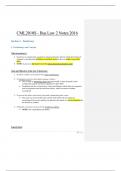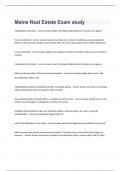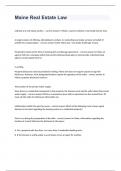Other
business law 2 notes , perfect for tests and exams
- Institution
- University Of Cape Town (UCT)
These notes have all the relevant and necessary information needed for the tests and exams , as well as contain examples which aid in understanding the content. contains exam and test questions as well. These notes aided me in getting a 96 in the course. truely amazing
[Show more]









